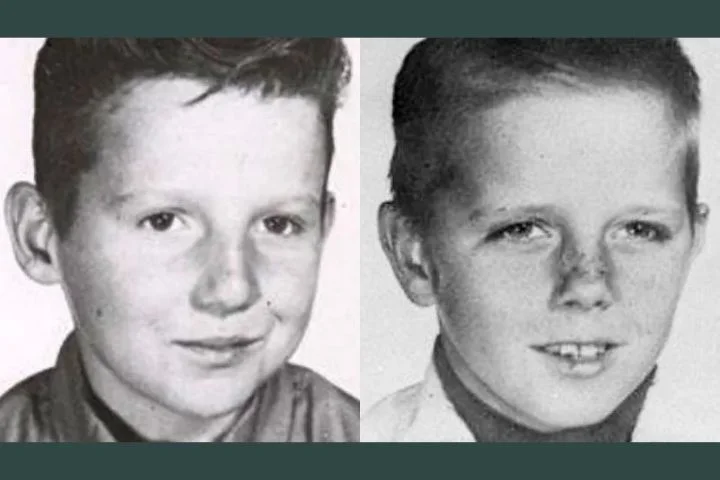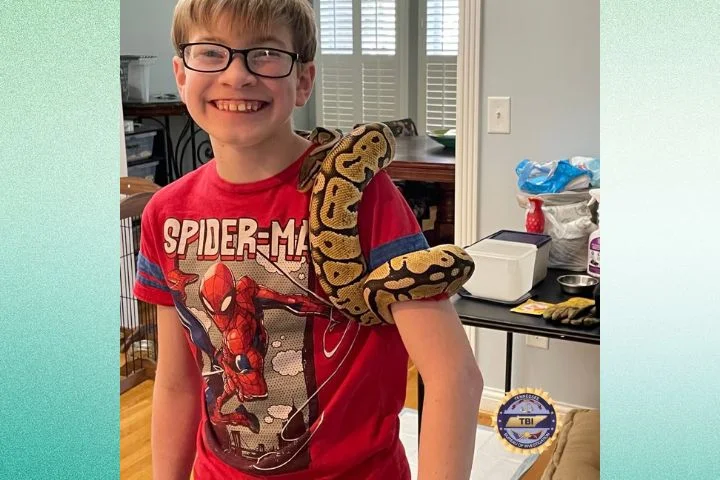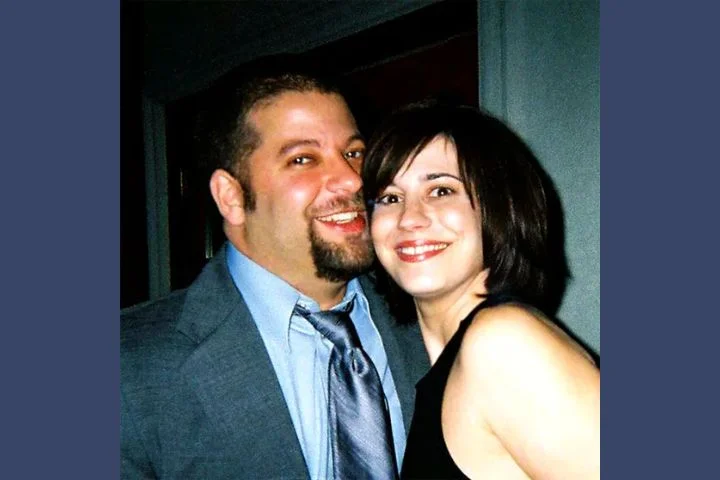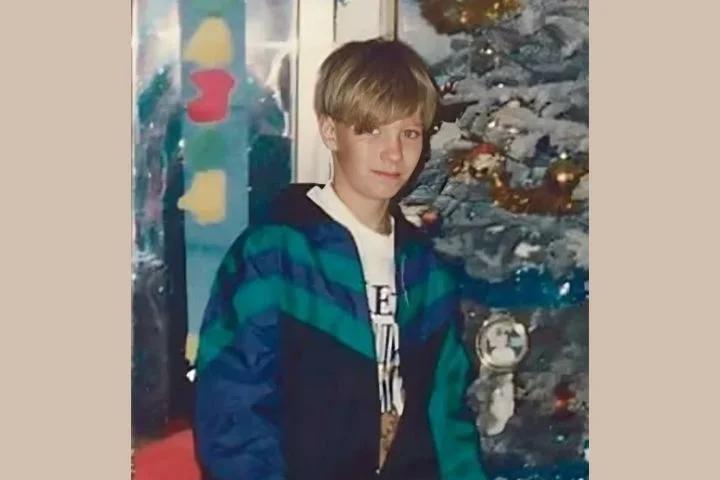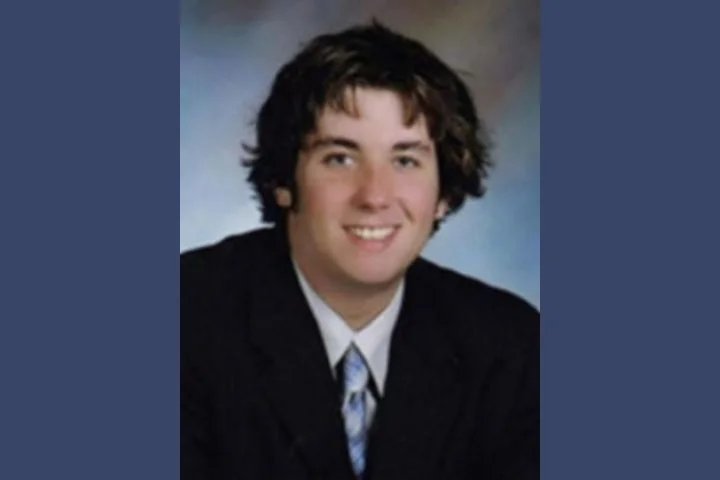Residents of Fairfax, Ohio, a small suburb of Cincinnati, had always considered their tiny town to be a safe and idyllic place to live. But their innocence was shattered in August of 1964, when four-year-old Debbie Dappen went outside to play and never came home. More than 500 people joined in the search for the little girl, praying that she would be found safe. Unfortunately, her body was discovered two days later, hidden under a porch by the 13-year-old boy who had mur*dered her after she attempted to fight off his sexual advances. It was a crime far too horrible to comprehend, made even worse by the fact that it had been committed by a young boy who was described as being nice and polite and who had never caused any trouble at all prior to this incident. The case made national headlines and had residents questioning how well they really knew their neighbors. Residents were struggling to move past the horrific mur*der when, less than two months later, a case involving two nine-year-old boys would catapult the town back into the national spotlight.
Johnny Hundley and Jimmy McQueary were best friends who did just about everything together. They were both nine-years-old and in the third grade at the Fairfax School, and they lived just three blocks apart from each other. It was common to see the pair wandering around the neighborhood; it was rare to see one without the other. They loved to go exploring, although it sometimes got them into some trouble.
The pair ran into some trouble the night of October 14, 1964. There was construction work being done on the sewer system in their neighborhood, and they had been playing around in one of the open sewer lines. Jimmy’s dad hadn’t been pleased when his son came home covered in mud and he told him to stay away from the construction area in the future. He also told Jimmy that he was to come straight home from school the next day, and Jimmy obeyed him. When school was over that day, he did go straight home. He just didn’t stay there. Instead, he left by the back door and met up with Johnny.
That afternoon, Jimmy and Johnny made a stop at Frisch’s Mainliner, a popular restaurant in town. They had gotten into trouble there the previous weekend when they ordered food and disappeared without paying the bill. Jimmy’s parents had just learned about it the day before, and they gave Jimmy the amount needed to settle the bill.
A waitress who was working at Frisch’s that afternoon confirmed that the two boys had come into the restaurant and paid for the food they had stolen. Jimmy’s father said that he had given his son exactly $1.04, the amount needed for the bill. But when the boys went into the restaurant, they paid with a $20 bill. They told the waitress that they had found the money, though they didn’t say where they had found it. The boys left Frisch’s around 4:00 pm. The waitress watched them walk through the restaurant parking lot, but she wasn’t sure which direction they were heading in. It would be the last confirmed sighting of the boys.
It wasn’t until the boys failed to return home for dinner that their parents realized that they were missing. Surprisingly, the police were remarkably unconcerned at first, especially in light of the fact that it had been less than two months since Debbie Dappen went missing and was later discovered dead. The boys were five years older than Debbie was at the time of her death, plus the fact that they were missing together led police to believe that they had probably just lost track of time and would soon show up. But as hours passed without any sign of the boys, their families knew something had to be wrong. Police began a cursory investigation, interviewing people around town in an attempt to determine when and where the boys had last been seen. There were witnesses who saw the boys playing in the area that afternoon, and police soon learned that they had stopped by Frisch’s restaurant, but the trail went cold after that. It appeared that no one had seen the boys after around 4:00pm.
Police could find no evidence that any sort of foul play had taken place, and they believed that the boys were most likely runaways. Their families insisted that this was not the case. Neither of the boys had ever been away from home before. They may have gotten into a little trouble every now and then, but neither boy had a history of running away, and it didn’t appear that they had any problems at home or at school that would have led to them deciding to leave town.
Investigators spent much of Friday searching around the town for any places where the boys could be, but there was no organized search like there had been when Debbie disappeared. They were convinced the boys had just decided not to go home for one reason or another. This theory was reinforced when they spoke with the waitress who had been the last person to see the boys. When she told investigators about the fact that the boys had come into Frisch’s with a $20 bill that they claimed to have found, they took this as proof that the boys had run away. That amount of money would be enough for them to buy food for a week or so.
The weekend passed without any sign of either boy. Although he still believed that the boys had run away together, the police chief decided to cancel days off for all Fairfax police officers until they could determine what had happened. They spent Monday searching through all the buildings in town; there were a number of abandoned warehouses and office buildings in the area, and it was possible that the boys had somehow managed to get themselves locked inside of one. They were unable to find any trace of the boys at all, leading investigators to believe that the boys were no longer in Fairfax.
It was during Monday’s search that a train inspector came forward and told police that he was certain he had seen the two boys in the B & O Railroad yard Friday morning, the day after they had been reported missing. He spoke to them for a couple of minutes and one of the boys asked him where the train was supposed to be going. Clark told him it was headed for St. Louis. He described the boy who had done all the talking as having freckles and an upturned nose, and he was wearing a striped shirt. The other boy seemed to be hiding off in the background, so he was unable to get a good look at him. When he was shown pictures of the boys, he identified Jimmy as the boy he had spoken with. Police had no way of verifying if the boys actually were Johnny and Jimmy, but Clark was certain that they had been. He did give an accurate description of Jimmy, and it’s very possible that the boy who was hiding in the background was Johnny; his family had described him as being timid and unlikely to talk to strangers.
The train the boys had been seen playing near had been bound for St. Louis, so police contacted their counterparts in that city to make them aware of the possibility that two runaways may have been headed their way. They also contacted railroad officials and asked them to check all of the boxcars that had been parked in Fairfax on the day the boys disappeared. There was always a chance that the boys had been playing around on one of the trains and had gotten trapped inside.
Police sent a bulletin with pictures and descriptions of the boys to police stations in 500 different cities, asking for them to keep an eye out for the two boys. Police certainly hoped that the pair would be found alive, but they sent textbooks belonging to the boys to the FBI in an attempt to obtain fingerprints in case they would be needed to identify a body.
While most missing children cases do not make national news, this one did. Had Jimmy and Johnny gone missing from any other place, national newspapers wouldn’t have picked up on it. But because they went missing from the same town where another missing child had been found murd*ered less than two months before, it made headlines all across the country. Residents bemoaned the fact that Fairfax was back in the national spotlight, and not for a good reason.
As news about the boys’ disappearance spread, investigators received numerous tips about possible sightings. One man claimed that he had been at the Lunken Airport the Saturday night after Jimmy and Johnny were reported missing, and he had observed two very dirty little boys washing up in the airport’s restroom. Not knowing about the missing boys at that time, he hadn’t paid too much attention to them. When he read about Jimmy and Johnny in the newspaper, he was convinced that they were the two children he had seen. A waitress and a bus boy working at the Sky Galley restaurant in the airport backed up the man’s claim, saying that they had witnessed two boys playing outside of the airport for about an hour on Saturday night. One of the boys had been wearing a blue and yellow striped shirt, which was what Jimmy was reported to have been wearing when he went missing. Since the Lunken Airport was only a few miles from where the boys lived, it’s certainly possible that they could have been in that area, though this would mean that they hadn’t gotten on a train Friday like one witness thought they had.
After hearing reports that the boys had been sighted near the airport, Cincinnati and Fairfax police joined forces to conduct a thorough search of the area. They went through the airport, all of the hangers, and all of the surrounding land, but they were unable to find any evidence of the two boys. They may have been at the airport at some point, but police were confident that they were no longer there. A Cincinnati police officer who was doing traffic work from a helicopter also flew over the search area, looking for anything that might help find Jimmy and Johnny.
James McQueary told police that Jimmy and Johnny had been playing in an open sewer line the night before they disappeared. The boys had been warned to stay away from there, but there was a chance they had disobeyed Jimmy’s father and gone again the next day. It was after 4:00 pm on Thursday when the open line had been filled in with gravel; if they had been playing inside it they would have been instantaneously buried. Investigators spoke to the construction workers who had been working that day, but none of them had seen any children playing around in the work zone when they were filling the trench with gravel. Police asked them to reopen the 20-foot deep trench anyway, and the construction workers agreed. They reopened the entire length of the trench that had been open the day the boys went missing, plus an extra ten feet at each end just to be on the safe side. Investigators found no evidence the boys had been inadvertently buried alive.
The case went cold almost immediately. There had been a few reported sightings of the boys, and police investigated each of them, but none of them led to the missing boys. The boys’ parents voluntarily submitted to polygraph examinations, mostly as a formality and not because police suspected they had anything to do with the boys’ disappearance. They all passed, and with no apparent signs of foul play, the case faded from the headlines.
It’s been more than 50 years since Jimmy and Johnny went outside to play and were never seen again. There have been many theories about what might have happened to the boys, but no evidence to support any of them. If the boys had been runaways, they most likely would have gotten in touch with their families at some point over the past five decades. There are many children who run away from home each year, but almost all of them end up eventually contacting someone in their family. It’s also possible that the boys did intentionally run away, but then met with foul play later. They certainly wouldn’t have been able to support themselves; they were just kids, with no access to money and no way of getting a job.
Money is an interesting subject in this case, as the boys were seen flaunting a $20 bill shortly before they disappeared. Where did this money come from? None of the boys’ relatives had given it to them, and it’s hard to believe there were many third graders carrying around that amount of cash in 1964. The boys had been known to occasionally search for discarded bottles that they could then turn in for money, but that only gave them a little bit of pocket change. It’s unlikely that the money was stolen, as the fact that the boys were seen with the money was highly publicized in the newspaper. Surely someone who was robbed of $20 on the same day that the boys went missing would have made the correlation between the two. Some people believed the boys stole money from the wrong person and were k*illed over it, but police never found anything to substantiate this.
The fate of Johnny and Jimmy has been a mystery for more than five decades. Investigators believe that they were most likely k*illed shortly after they went missing, but they have no idea who ki*lled them or what was done with their bodies. Family members have long since come to terms with the fact that they will not be found alive, but they remain hopeful that someone will come forward with the location of their bodies so that they can be given a proper burial.
